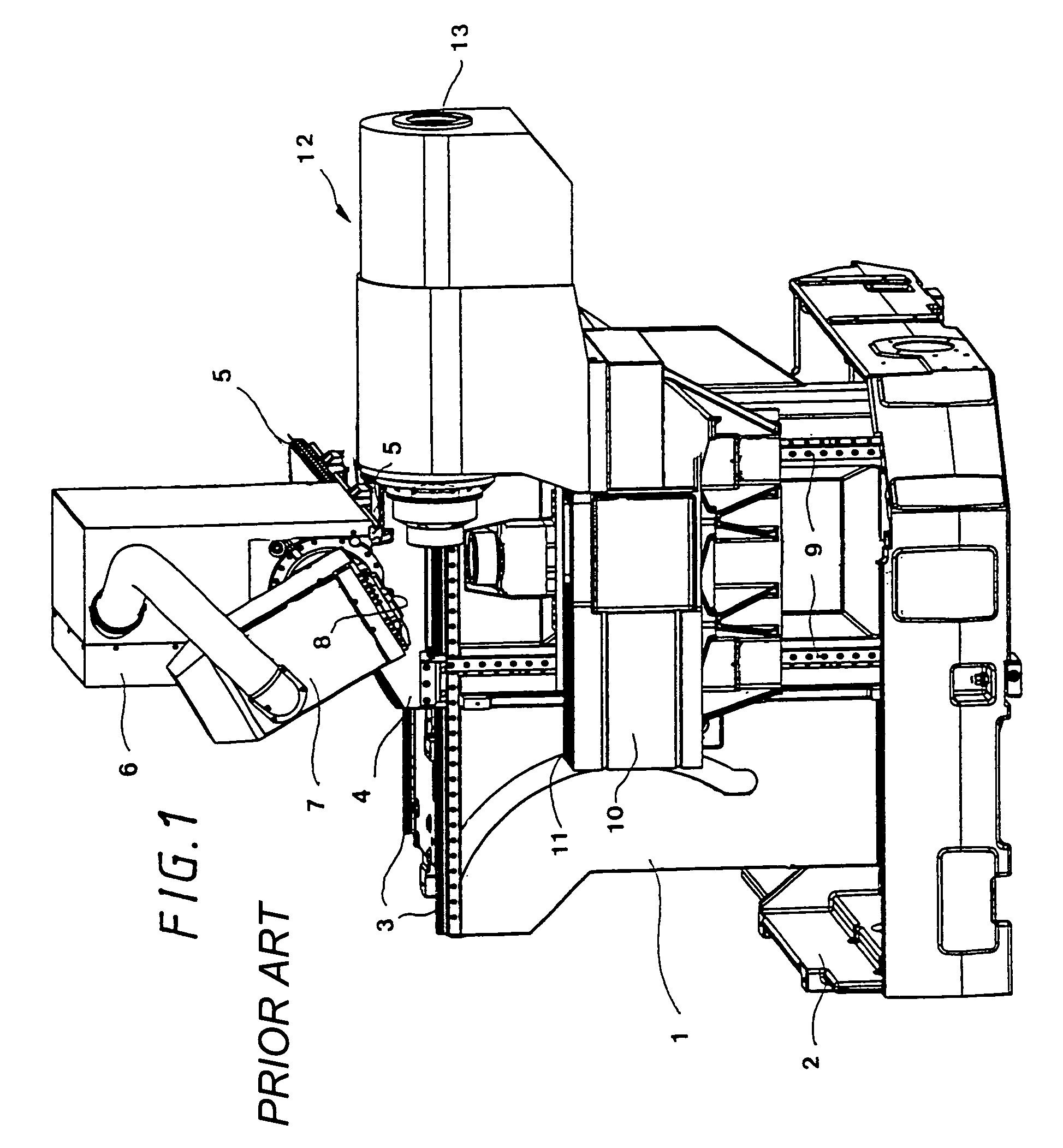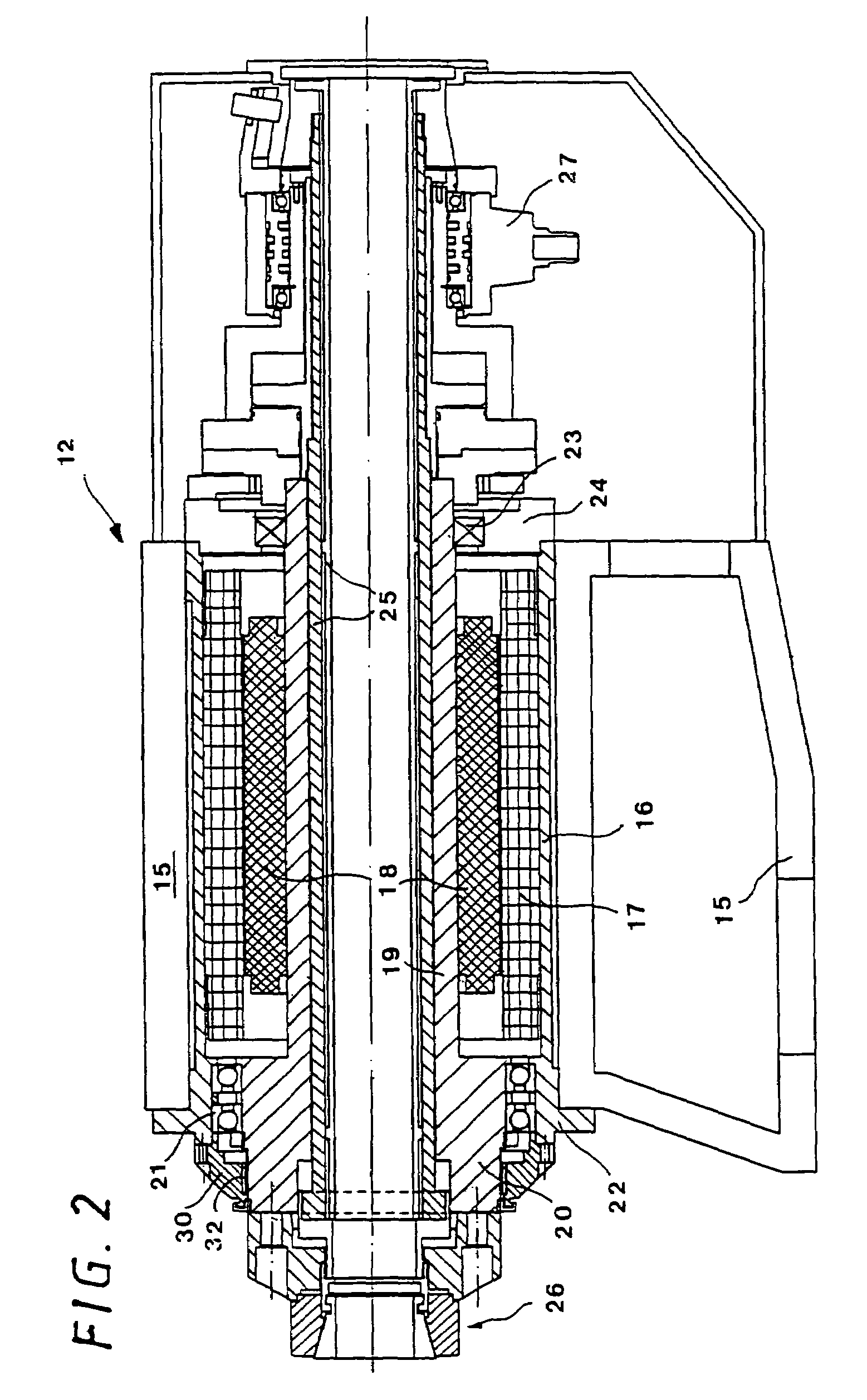Workpiece seat for bar-shaped workpieces
a workpiece and seat technology, applied in the field of workpiece seats, can solve the problems of occupying such space, elongating the workpiece seat, and complicated structural structure of the known fixing means
- Summary
- Abstract
- Description
- Claims
- Application Information
AI Technical Summary
Benefits of technology
Problems solved by technology
Method used
Image
Examples
Embodiment Construction
[0019]The basic structure of a workpiece seat according to the invention is shown in axial cross-section in FIG. 2. An electric direct drive is arranged coaxially in hollow-cylindrical elongated housing 16. The housing is surrounded by dimensionally stable and load-bearing cover element 15. Drive stator 17 is fixed at the inner wall of the housing and rotor 18 is fixed on the peripheral wall of elongated hollow-cylindrical spindle 19. Radially enlarged front part 20 of the spindle is supported in front-side ball bearings 21 in front end part 22 of the housing. The rear end part of the spindle is supported via bearing 23 in housing part 24. In the continuous cylindrical interior space of the spindle, sleeve arrangement 25 is located, which forms part of a clamping means for a bar-shaped workpiece inserted into the interior space. Clamping chuck 26, shown on the left side of FIG. 2, is associated to this clamping means. Clamping wedges fixedly clamp or release the front end of the wor...
PUM
| Property | Measurement | Unit |
|---|---|---|
| driving force | aaaaa | aaaaa |
| diameter | aaaaa | aaaaa |
| forces | aaaaa | aaaaa |
Abstract
Description
Claims
Application Information
 Login to View More
Login to View More - R&D
- Intellectual Property
- Life Sciences
- Materials
- Tech Scout
- Unparalleled Data Quality
- Higher Quality Content
- 60% Fewer Hallucinations
Browse by: Latest US Patents, China's latest patents, Technical Efficacy Thesaurus, Application Domain, Technology Topic, Popular Technical Reports.
© 2025 PatSnap. All rights reserved.Legal|Privacy policy|Modern Slavery Act Transparency Statement|Sitemap|About US| Contact US: help@patsnap.com



